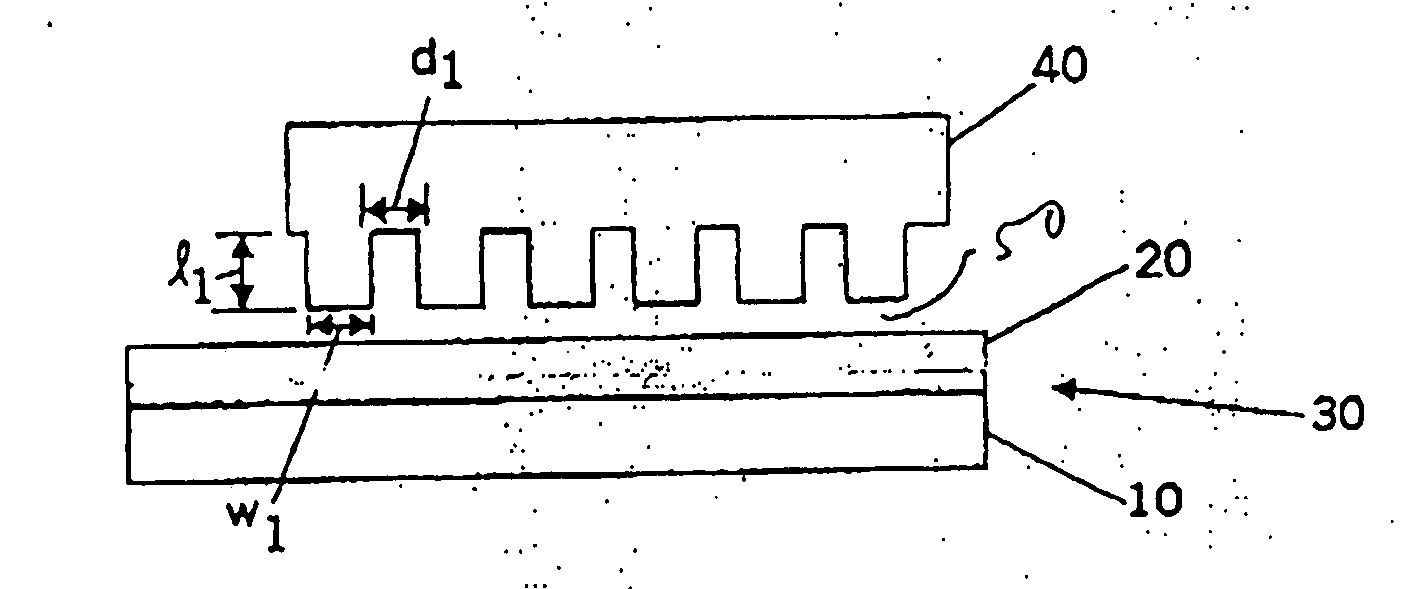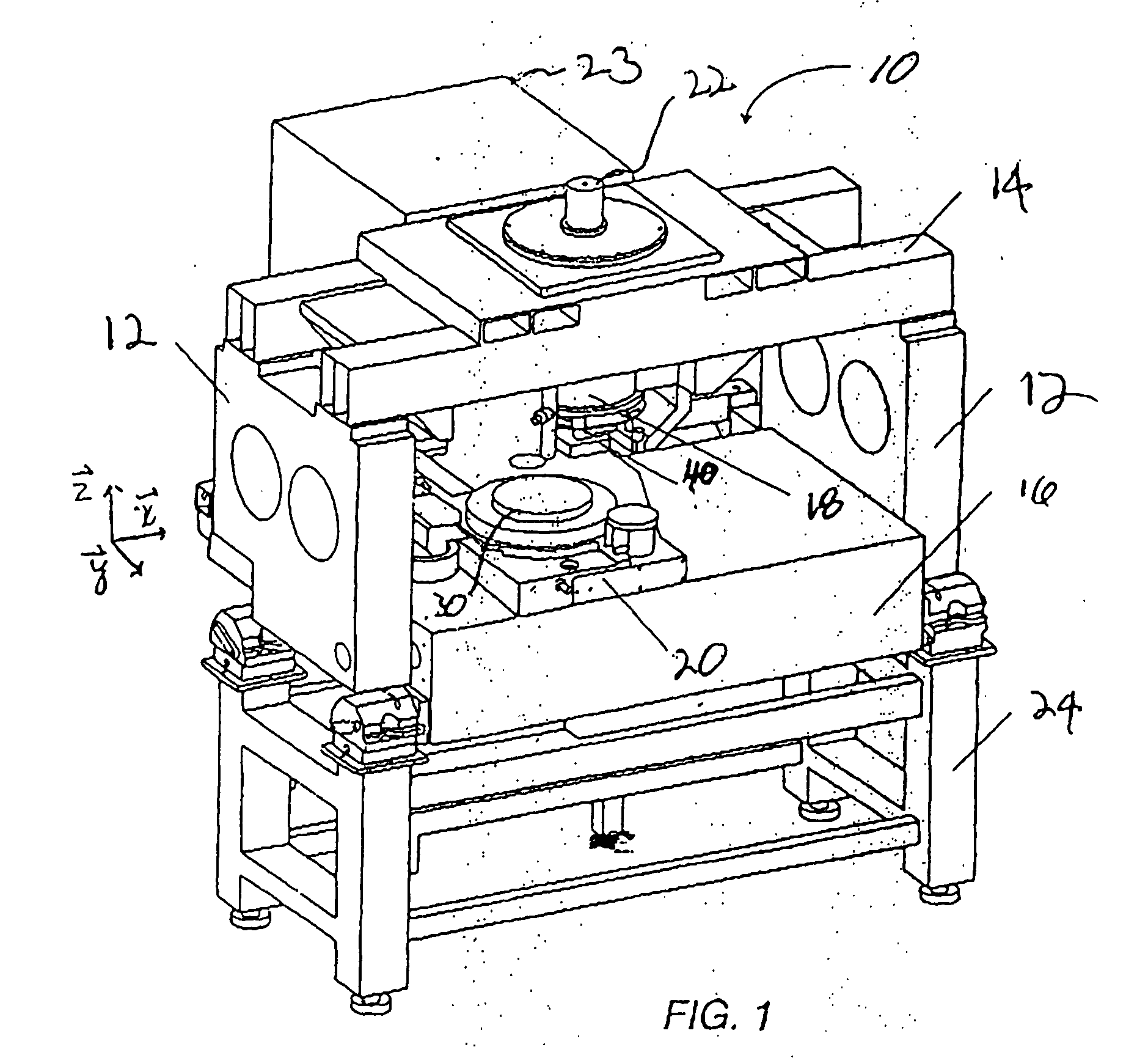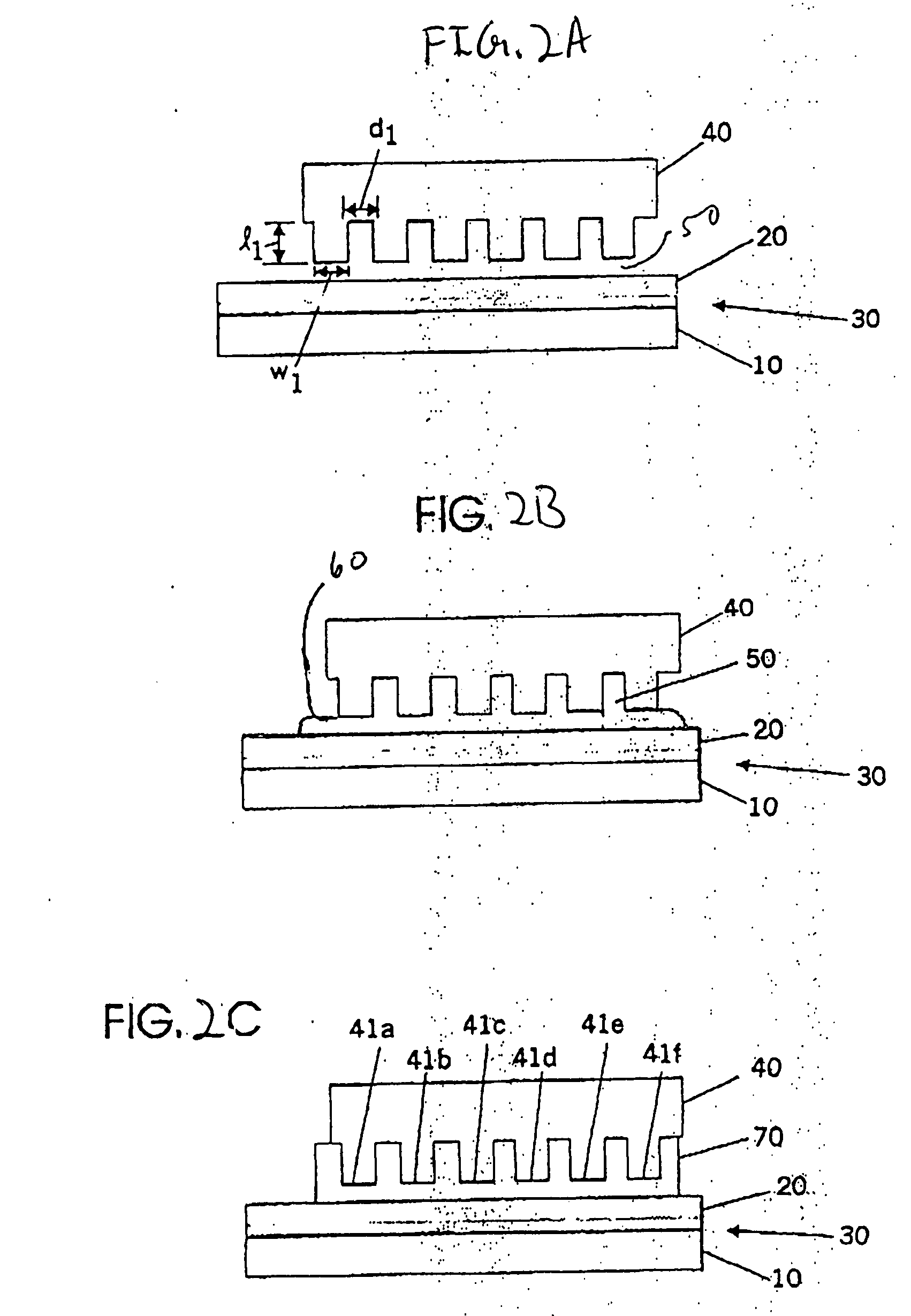Imprint lithography templates having alignment marks
a technology of alignment marks and lithography templates, which is applied in the field of imprint lithography, can solve the problems of inability to mass produce sub-50 nm lithography at low cost, economic impracticality of using sub-50 nm structures to mass produce, and limited lithography resolution for this type of lithography
- Summary
- Abstract
- Description
- Claims
- Application Information
AI Technical Summary
Benefits of technology
Problems solved by technology
Method used
Image
Examples
Embodiment Construction
[0020] One or more embodiments of the present invention relate to an imprint template or mold for imprint lithography that comprises alignment marks embedded in bulk material of the imprint template. In addition, in accordance with one or more further embodiments of the present invention that are useful for optical alignment techniques, the alignment marks are fabricated from a material whose index of refraction is different from that of at least the bulk material of the imprint template surrounding the alignment marks. Still further, in accordance with one or more further embodiments of the present invention, the alignment marks are fabricated from a material whose index of refraction is different from that of at least the bulk material of the imprint template surrounding the alignment marks and that of the material into which an imprint is made in carrying out an imprint lithography process. Advantageously, in accordance with such embodiments, differences in indices of refraction ...
PUM
| Property | Measurement | Unit |
|---|---|---|
| feature sizes | aaaaa | aaaaa |
| shrinkage | aaaaa | aaaaa |
| aspect ratio | aaaaa | aaaaa |
Abstract
Description
Claims
Application Information
 Login to View More
Login to View More - R&D
- Intellectual Property
- Life Sciences
- Materials
- Tech Scout
- Unparalleled Data Quality
- Higher Quality Content
- 60% Fewer Hallucinations
Browse by: Latest US Patents, China's latest patents, Technical Efficacy Thesaurus, Application Domain, Technology Topic, Popular Technical Reports.
© 2025 PatSnap. All rights reserved.Legal|Privacy policy|Modern Slavery Act Transparency Statement|Sitemap|About US| Contact US: help@patsnap.com



